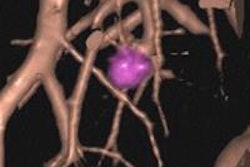Dear Advanced Visualization Insider,
Matching lung nodules on serial CT scans can be a challenging task due to factors such as varying patient positioning and degree of breath-holding. An automatic deformable image registration algorithm, however, can cut in half the time it takes to perform this crucial task, compared with manual registration methods.
The result is improved efficiency and cost savings, according to a group led by Dr. Matthew Barish from Stony Brook Medicine. Find out all the details in this issue's Insider Exclusive, which you can access before it's available to our regular members.
In other news in the Advanced Visualization Digital Community, researchers from the U.S. National Institutes of Health have found that tumor assessment criteria that account for both tumor density and volume more accurately reflect tumor burden than methods that rely only on tumor density. The criteria may also improve treatment monitoring by predicting outcomes earlier. Learn how by clicking here.
While image processing advances have provided radiologists with new weapons to spot abnormalities, more tools are required, according to Dr. Geoffrey Rubin of Duke University. What would he like to see from image processing firms? Click here to find out.
3D surface reconstructions can certainly yield beautiful renderings of a patient's face. Although it's difficult, patients could potentially be identified just from their reconstructed CT scan, according to a team led by Dr. Joseph Jen-Sho Chen from the University of Maryland School of Medicine.
Do you have any interesting images or clips that might be suitable for our AV Gallery? You are welcome to submit them here.




















